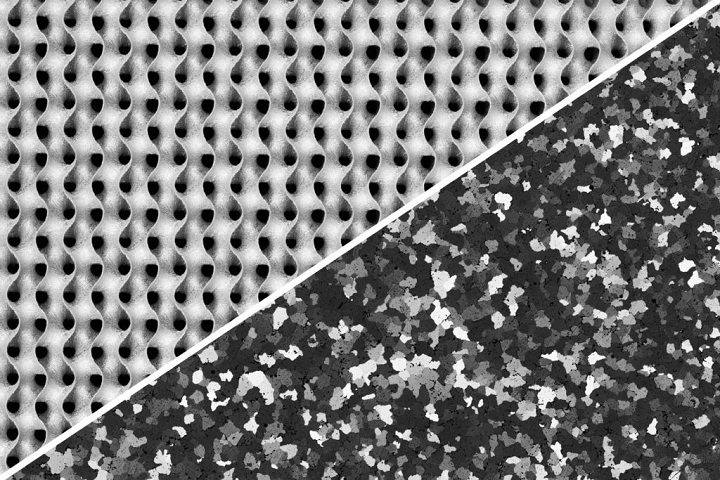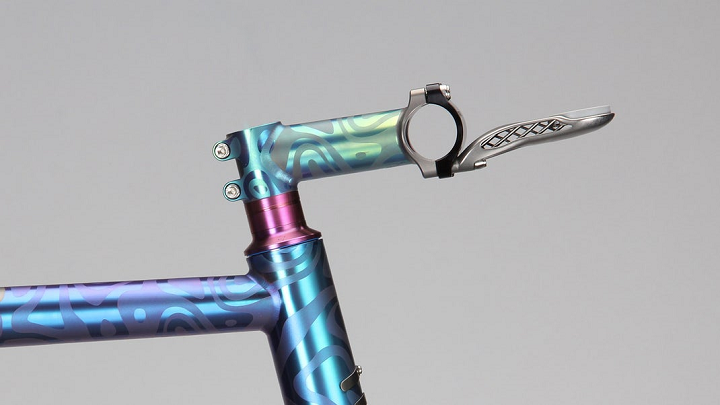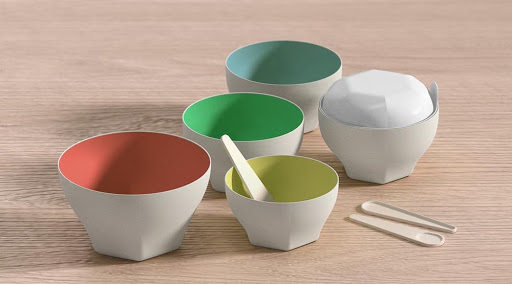First things first in this edition of 3D Printing News Briefs, Alloyed has received a hybrid AM research grant, and researchers from the University of Minnesota have developed a spherical 3D printed microfluidic device. Moving on, GE has finished testing on its first XA100 adaptive cycle aircraft engine. Finally, Silca is 3D printing metal computer mounts for its bicycles, and a Swedish company is using ExOne’s binder jet 3D printing to make more sustainable options for packaging and other containers.
CHAMPP Consortium Receives Research Grant
The Casting-Hybrid-Additive-Manufacturing-Parts-Production, or CHAMPP, consortium was initiated in order to investigate a hybrid approach to producing automotive components, taking a look at both additive manufacturing and traditional casting. The program brings together technical and market expertise with three main partners—Alloyed, Brunel University London’s BCAST, and Gestamp together with its affiliate Autotech—in order to combine the design and production flexibility of AM with the low cost-per-part capabilities of casting. Alloyed, which brings its Alloy by Design (ABD) platform for casting and AM to the consortium, recently announced that CHAMPP has been awarded a significant grant in order to research, develop, and test out a new hybrid production process for standard automotive components, as well as creating new aluminum alloys that can first be cast, and then built on in order to produce complex and/or custom features using 3D printing.
“We are delighted to be a part of the CHAMPP programme and bring our considerable experience and expertise to the project,” said Sajjad Amirkhanlou, Programme Director at Alloyed. “It is vital for AM — if it is to fulfil its true potential — that the speed, size, and cost limitations are addressed fully. Through the CHAMPP programme we will tackle these issues head-on by taking a multi-disciplinary approach and combining AM with an efficient and optimised casting process.”
University of Minnesota Develops 3D Spherical Microfluidic Device

Researchers at the University of Minnesota are the first to 3D print microfluidic channels on a curved surface, providing the initial step for someday printing them directly on the skin for real-time sensing of bodily fluids (Photo courtesy of McAlpine Group, University of Minnesota)
A team of researchers from the University of Minnesota, led by 3D printed electronics expert Professor Michael McAlpine, published a study on their work developing a 3D spherical microfluidic device, which has potential use in automating drug discovery and development applications. By 3D printing microfluidic channels on a curved surface, we’re one step closer to printing them directly onto human skin for real-time sensing of bodily fluids. Team member Dr. Ruitao Su, a postdoctoral associate in the university’s Department of Mechanical Engineering, recently participated in a Q&A to help explain some of the details of this work.
“This project started with the goal of three-dimensionally (3D) printing multiplexed biosensing platforms that can detect and discriminate between various lipopolysaccharide-containing bacteria in a high-throughput and real-time manner. To this end, we needed to integrate an array of heterogeneous sensors that were functionalised with probing molecules with 3D printed microfluidic networks that can guide the flow of analytes through the sensors. What we realised was that the existing methods for 3D printing microfluidic devices, such as stereolithography and inkjet printing, cannot meet this goal without introducing contamination to the sensors. In other words, the residual resins or sacrificial materials present in these devices are harmful to the functionalised sensors and will damage its efficacy for biochemical sensing. Therefore, we designed and printed this new type of microfluidic device that forms hollow channels and chambers by extruding viscoelastic inks, which can be directly aligned and printed on microsensors and other surfaces. Even though this technology was developed for biochemical sensing, it can be readily transferred to other applications such as drug screening, point-of-care devices, tissue engineering and even personalised wearables for health monitoring,” Dr. Su said about the team’s microfluidics platform.
“What enables the printing of the self-supporting microfluidics is the yield-stress behaviour of the viscoelastic ink, silicone gel. This property renders the printing of standing thin walls by stacking extruded filaments in a certain angular range and avoids structural collapsing that occurs in other printing methods. We designed the printing toolpaths in a manner that closed the walls on the top to form channel and chamber structures. The resolution of the channels is controlled by specifying the distances between two opposite standing walls, which proved to be a robust and highly repeatable methodology.”
GE Finishes Testing XA100 Adaptive Cycle Engine
GE has successfully finished testing on its first XA100 adaptive cycle engine, which has been ongoing at its Evendale, Ohio, altitude test facility since December of 2020. The XA100 engine, which is a product of the GE Edison Works R&D business unit, combines an adaptive cycle with high-thrust and high-efficiency modes, a third-stream architecture that provides a step-change in thermal management capability for better combat readiness, and major use of advanced component technologies, including polymer matrix composites, ceramic matrix composites (CMC), and additive manufacturing, to deliver a big change in combat propulsion performance. The engine’s mechanical behavior and performance during testing were consistent with early predictions, and fully aligned with the objectives of the US Air Force’s Adaptive Engine Transition Program (AETP), validating its ability to, as GE explained, “deliver transformational propulsion capability to fighter aircraft.”
“This was the most heavily instrumented engine test in both GE and U.S. Air Force history,” explained David Tweedie, GE Edison Works’ General Manager for Advanced Combat Engines. “We were able to obtain an immense amount of high-quality test data proving out the engine’s capabilities and demonstrating a good return on the Air Force’s investment. The Air Force has been an integral part of the team throughout the entire design and test process. That extensive involvement has been key in reaching this milestone. It has been an incredible partnership and collaboration.”
Assembly of GE’s second XA100 engine prototype has already begun, and testing is expected to begin later this year. Once it’s completed, the AETP program’s major deliverables will be concluded.
Silca 3D Printing Metal Computer Cycle Mounts
Last year, Italian cycling brand Silca purchased a 3D printer for the purpose of 3D printing metal computer mounts for its bicycles, and the result is the new Silca Mensola, 3D printed with 6Al/4v titanium that’s lighter yet much stronger than aluminum. The mount weighs between 27.5-38 g, depending on the model, and works with all Garmin and Wahoo computers. The Mensola, which is the brand’s first commercial 3D printed product, takes three days to print and attaches to the bike with two stem bolts, which is a design also used by the F3 Form Mount. The metal 3D printed cycle mount costs $175.
Silca CEO Josh Poertner said, “There is nothing more exciting right now than 3D printing.
“This is the future of everything. And 3D printing has a unique environmental story, as there is no excess material waste. Also, I want to make beautiful products that last forever, and I want to make it for you, for your bike.
“We didn’t invent the computer mount or an accessory that shares the stem bolt holes. But what 3D [printing] allows us to do is make a dozen designs for all the different stem brands. We can make these parts pretty much in any geometry to order.”
ExOne Enables Celwise to Offer Sustainable Option
Over the last ten years, Swedish company Celwise AB has been busy developing an advanced technology to create a system and process that majorly changes up the way we make and form paper. This technology is also said to be far less expensive, more flexible, and better for the earth than other processes. The company is using ExOne’s metal binder jet 3D printing, and specially designed mixes of wood pulp, to create plastic-like, water-resistant products that could potentially replace paper and plastic goods for a more sustainable solution. The printer Celwise is using, along with 316L stainless steel, is the ExOne M-Flex.
“Unique Celwise tooling, which is only made with binder jet 3D printing, is at the core of this exciting new renewable, and biodegradable technology. There are three types of tools in each machine – forming, transferring, and pressing – to produce goods that will disrupt the paper and plastic industry,” ExOne wrote in a blog post.
“This new application is a state-of-the-art fibre moulding technology, representing the wise use of 21st century technologies to replace 19th century technology and processes. The final product is superior to traditionally molded fiber products in several respects.”
Subscribe to Our Email Newsletter
Stay up-to-date on all the latest news from the 3D printing industry and receive information and offers from third party vendors.
You May Also Like
3D Printing Unpeeled: New Arkema Material for HP, Saddle and Macro MEMS
A new Arkema material for MJF is said to reduce costs per part by up to 25% and have an 85% reusability ratio. HP 3D HR PA 12 S has been...
3D Printing News Briefs, January 20, 2024: FDM, LPBF, Underwater 3D Printer, Racing, & More
We’re starting off with a process certification in today’s 3D Printing News Briefs, and then moving on to research about solute trapping, laser powder bed fusion, and then moving on...
3D Printing Webinar and Event Roundup: December 3, 2023
We’ve got plenty of events and webinars coming up for you this week! Quickparts is having a Manufacturing Roadshow, America Makes is holding a Member Town Hall, Stratafest makes two...
Formnext 2023 Day Three: Slam Dunk
I’m high—high on trade show. I’ve met numerous new faces and reconnected with old friends, creating an absolutely wonderful atmosphere. The excitement is palpable over several emerging developments. The high...



































